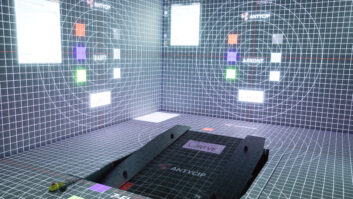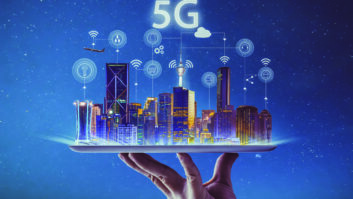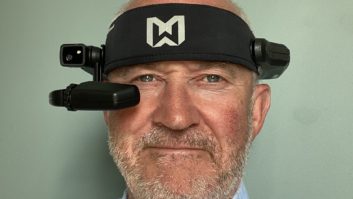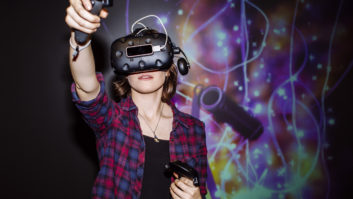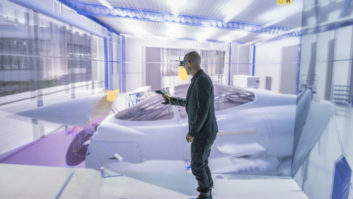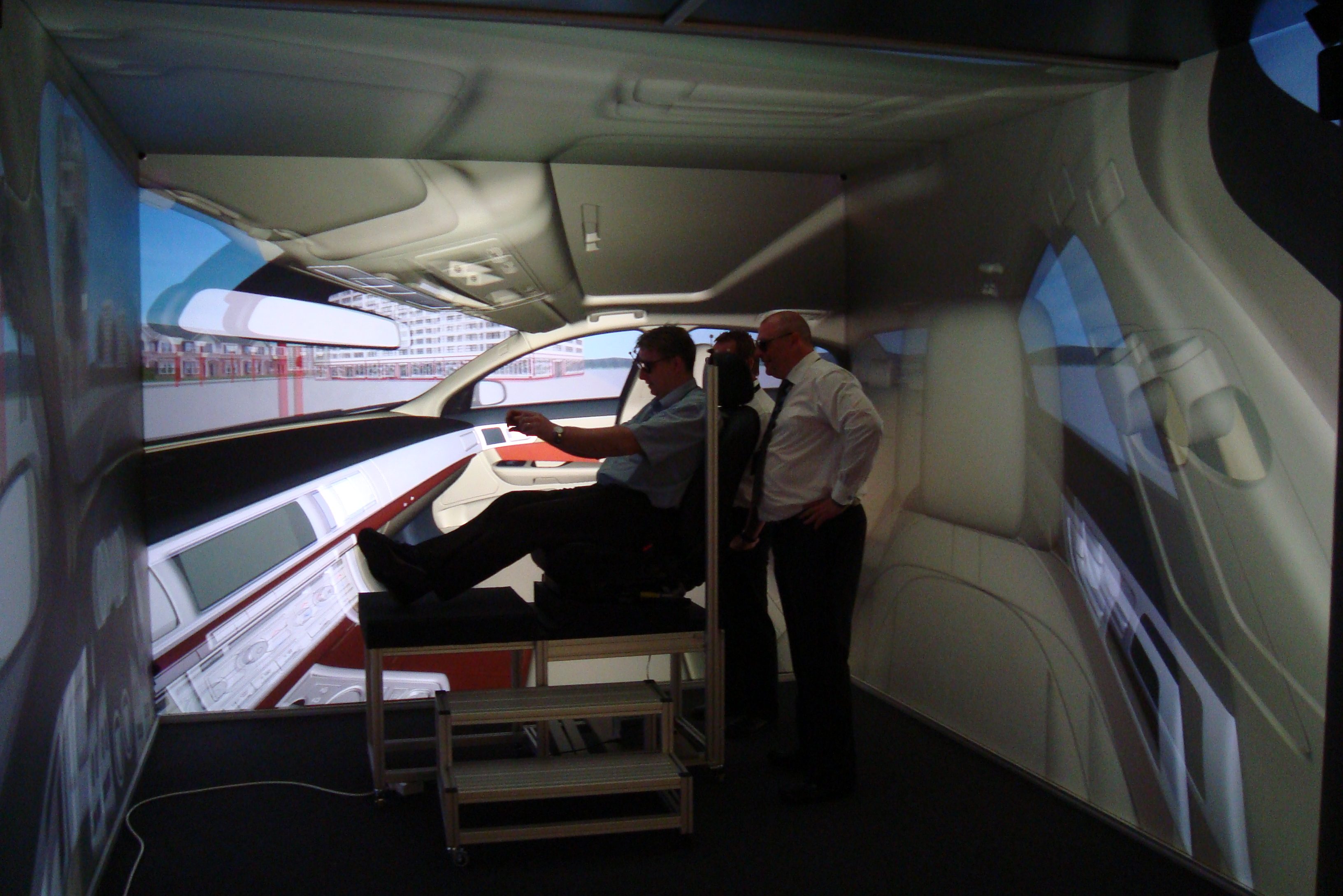
In the first part of this feature we revealed some of the sectors benefiting from VR/AR, here Michael Burns looks to the future and the sort of impact these technologies could have, as well as how integrators can get involved.
“Creating true virtual reality needs more than just visual immersion,” says Stuart Hetherington, CEO of sensory experience designer Holovis. “All of a person’s senses must be catered for, including spatial audio, perfectly synched motion and multi-sensory SFX. This can be achieved in a CAVE, where all four or five walls feature projection and the user sees the virtual world in 1:1 scale with real-time media, wearing head-tracked glasses so the environment moves to their true perspective. Recently we have been combining these two approaches, with users wearing an HMD but entering a high-end simulation environment, so all the other senses are immersed.
“Our Near Miss Simulator [shown in ISE 2017’s Immersive Technology Zone] is primarily a training tool for people working at height, but it can be used to recreate any dangerous or non-compliant working environment. The person enters the fully immersive world, wearing an HMD, surrounded by spatial audio, standing on a motion platform which syncs perfectly with the visuals and with SFX in the form of a breeze, and begins a series of tasks, given to them by a coach. Using VR to save lives through the creation of multisensory immersive environments is an incredibly compelling business case.”
Greg Taylor, general manager at digital agency Tigerspike Next, also sees immersive technologies becoming more prevalent in enterprise systems. “More specifically VR will start to revolutionise healthcare, particularly in areas such as pain management, with devices already being used to help burn victims,” he says. “Placing patients into an alternate icy and cold ‘reality’ has been proved to reduce pain experienced during skin-grafting procedures by up to 90%, according to research conducted by the University of Washington. VR is also being used to rehabilitate paraplegic patients suffering from a chronic spinal cord injury, helping to reactivate limb function.”
That’s all happening right now, but it’s just the tip of the virtual iceberg.
“We think within a decade pretty much every event or happening of any interest in the world will be live streamed in VR,” says Alx Klive, CEO of 360 Designs, which offers live 360° production services to brand-name clients in sports, music and events. “There will be professional streams, and social streams, combinations of the two. People will jump around events globally in VR, as quickly as a tap of the headset. Venues will require infrastructure to cope with the bandwidth, and some may want to have permanent live VR installations, so they can produce their own events. When venues realise they can grow their revenues beyond their physical attendee capacity, things will get interesting. Venues have the potential to grow revenues dramatically, since there is no upper limit to the number of virtual attendees.”
“Brands are already starting to buy marketing real estate inside virtual applications,” says Amelia Kallman, head of innovation at Engage Works. “I believe in the future this will be where a lot of advertising, subtle and direct, takes place.”
“The use of virtual training looks set to increase, using a CAVE to deliver mission-critical lessons that people need to know before they are faced with the real thing,” says Hetherington. “BAE Systems is championing this within its new Aerospace Academy with a CAVE designed, built and installed to a turnkey specification.” This features LearnView, a proprietary software suite developed by Holovis to create traditional classroom-based lessons as a 1:1 scale visualisation, with real-time media and interactive tasks to complete. “LearnView uses the Holovis InMo framework to translate training material into something that can be visualised and interacted with in the virtual space. This allows training to take place in the CAVE presented as a range of scenarios, from wiring an aircraft to the design of major infrastructure.”
“Good-quality connectivity is key for all of these things,” says Steve Plunkett, CTO of Ericsson Broadcast & Media Services. “You can have an application on a mobile device, like Pokémon Go, which puts the data into the app and uses GPS to decide when to trigger it. In some of the more sophisticated use cases, it is about a real-time media exchange. That’s more significant with VR because the 360° nature of the stream, and 4K resolution is a whole different problem. AR resolution can be much, much lower and much more realistic.”
Get your HMD on
So how can AV integrators and professionals get involved, and make this happen?
“The equipment to do quality live VR right now is quite expensive, and requires considerable specialist expertise,” says Klive. “This represents an opportunity for system integrators who are willing to learn how to do it now, and work with a specialist partner to sell the solution to larger clients.”
Hetherington says the AV industry is already playing a crucial role in the development of highly realistic multisensory environments. “Innovations in visual display technology, from projection to ultrafine pixel-pitch LED displays and immersive audio configurations, are all driving these developments, allowing people to see that HMDs aren’t always the best option – especially when teams need to work together to examine specific details, something that can’t be achieved without the group all sharing the same user experience.”
“For the AV market, we see great potential in AR and mixed reality,” agrees Erik Beaumont, CEO at Ventuz Technology. “There are many ways to tap into this area aside from holo glasses. Some of our customers use transparent interactive screens that are connected to motion-tracking technology. This way, a screen can be moved around an object or room, and the content adjusts according to the screen’s position. If this is combined with content that is interactive, intuitive and informative, these installations are likely to make users stick around for a while on your exhibition booth or in your showroom. For companies who haven’t worked with AR technologies, this might be a good first step.”
“The tools are available today and the technology works,” says Caspar Thykier, CEO and co-founder of AR app company Zappar, “[though] it would be great if someone could find a seamless way to properly remotely capture images from a device on to a big screen with zero latency and no need for an HDMI cable! Apple TV is good but even that could be improved upon.”
He offers two pieces of advice for companies looking to get involved. “The biggest issue is that when people are made aware of the potential of AR, VR or MR – let’s call them XR collectively – they see so many opportunities that they forget to focus on one and start the journey. Our mantra is think big, but start small.
“There’s also the issue of understanding within an organisation who should be responsible for the overall XR strategy and execution, as it touches so many departments across innovation, procurement, consumer products and marketing. So it requires C-level buy-in and a project lead to truly capture the value in this potentially transformational technology.”
http://360designs.io
www.engageworks.com
www.ericsson.com/broadcastandmedia
www.holovis.com
www.tigerspike.com
www.ventuz.com
www.zappar.com
